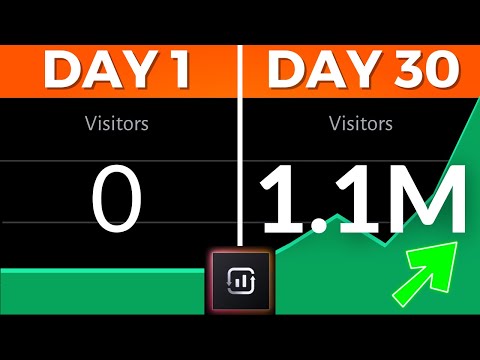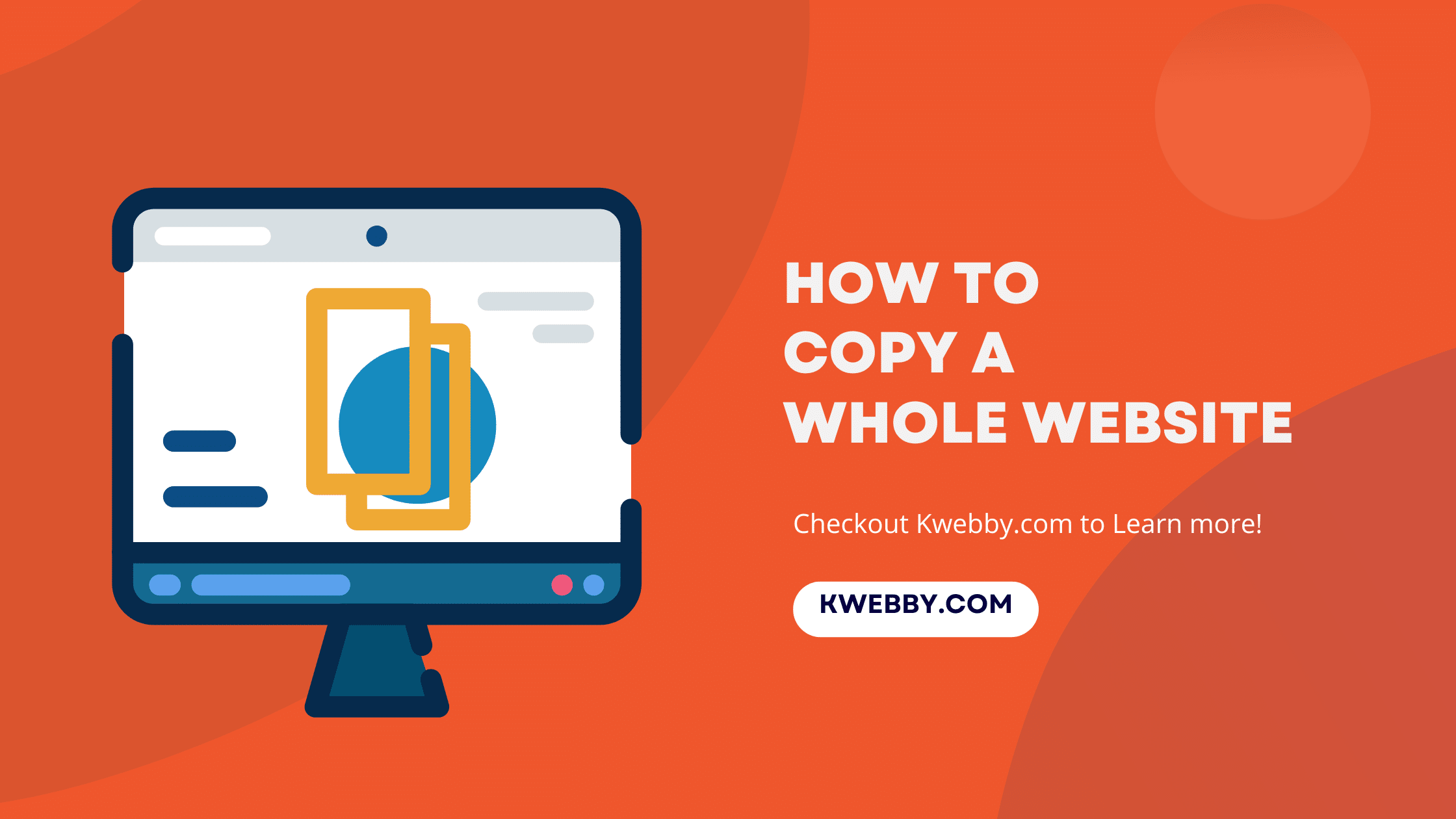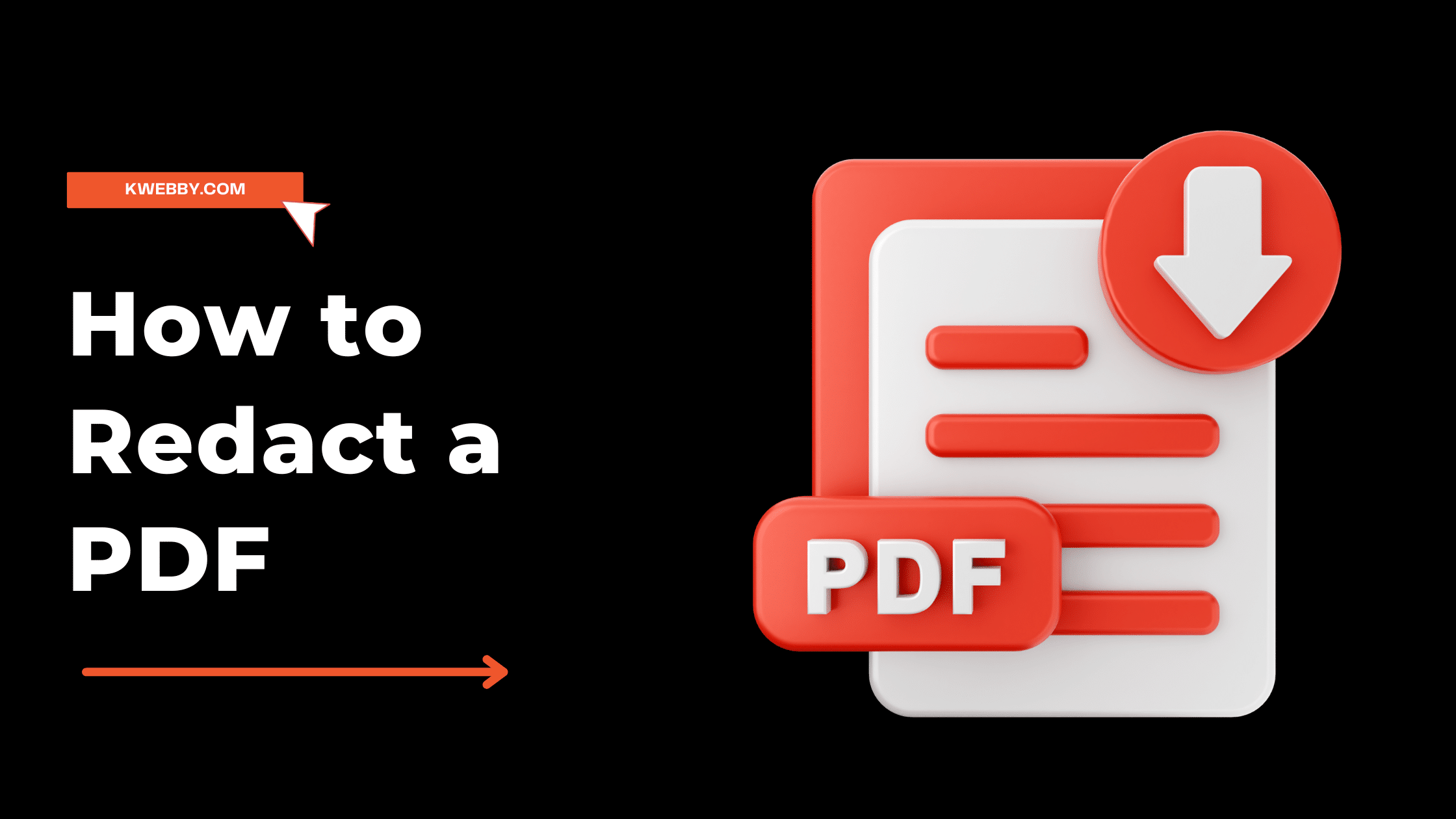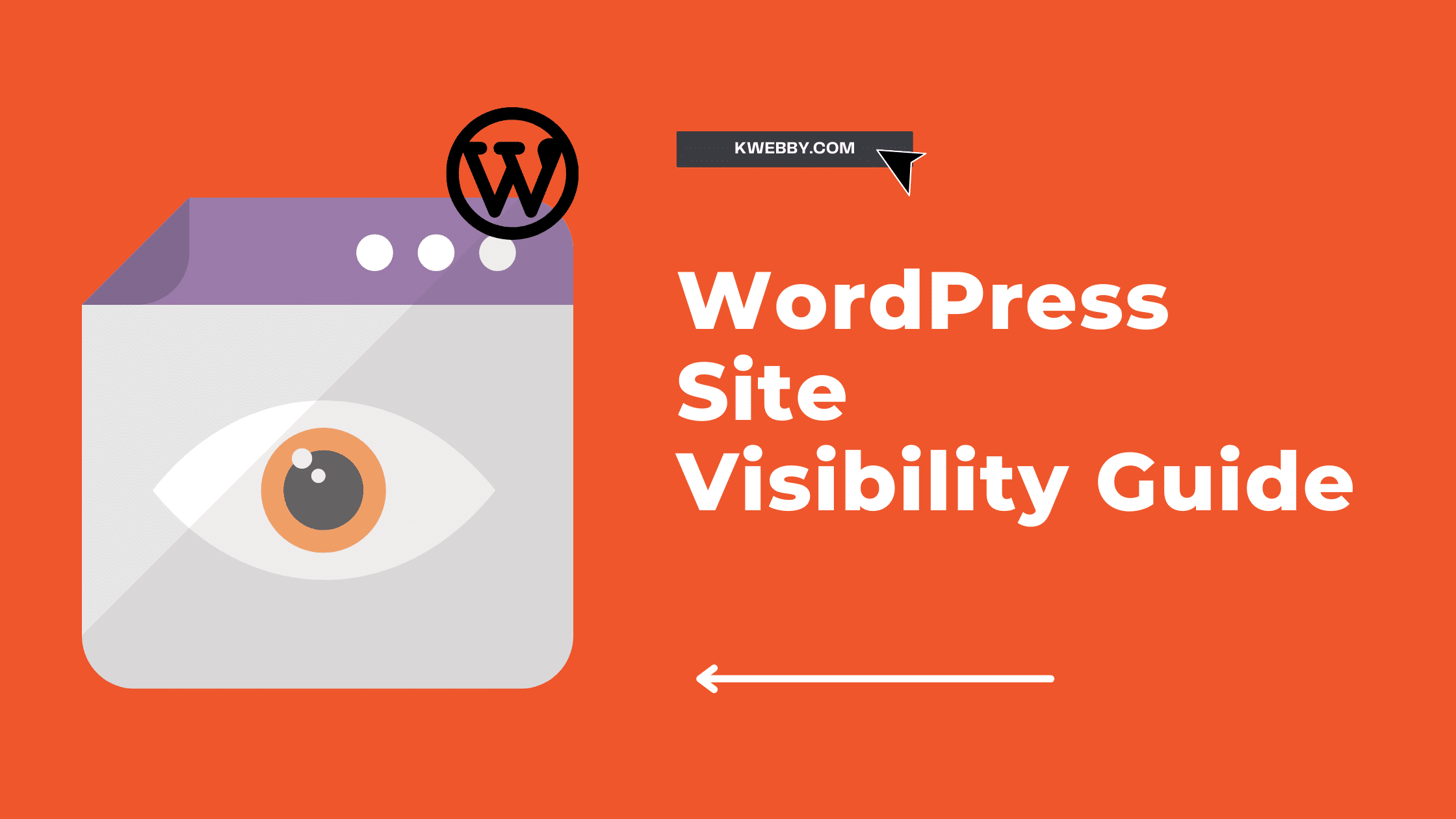
How to Make My WordPress Site Visible on Google Search in 7 Proven Ways
Are you tired of your WordPress site being invisible on Google searches? Well, fret no more! In this article, we will show you the secrets to making your site easily discoverable by Google’s crawling mechanism.
From understanding how it works to taking the necessary steps, we’ve got you covered. So get ready to boost your site’s visibility and reach a wider audience.
Let’s dive in and make your WordPress site shine like a beacon on Google search!
Understanding Google’s Crawling Mechanism
To make your WordPress site visible on Google search, you need to understand how Google’s crawling mechanism works. This is crucial because it determines how often and effectively your website is indexed by Google.
The crawling process refers to how search engines discover and analyze web pages. Google sends out automated programs called spiders or bots that crawl through websites, following links and collecting data.
These bots visit websites at different frequencies based on various factors, such as the site structure’s importance, content’s freshness, and website popularity.
The frequency at which your website is crawled depends on its importance and relevance to users’ search queries.
- To increase the chances of frequent crawling, ensure your site has a clear and logical structure with properly organized navigation menus and internal linking.
- Additionally, website speed determines how often your site gets crawled. A slow-loading website may result in less frequent visits from the crawlers.
- Optimizing meta tags is another essential aspect of improving visibility on search engines. Meta tags provide search engine crawlers with information about your web pages, helping them understand the content better. By optimizing these tags with relevant keywords related to your content, you can improve the chances of getting indexed accurately.
Understanding Google’s crawling mechanism sets the foundation for making your WordPress site visible on Google search. However, there are several reasons why your site might not be indexed properly by Google, which we will explore next.
Now that you understand how Google’s crawling process works, let’s delve into why sites might not be indexed correctly by Google…
Reasons Your Site Might Not Be Indexed
If your website is not being indexed by Google, there could be several reasons for this.
First, check if you are experiencing server issues that might prevent the search engine from accessing your site.
Additionally, ensure you have not violated any of Google’s terms or guidelines, as this can lead to deindexing.
It’s also important to review your SEO settings in WordPress and ensure they are properly optimized for search engines.
Another factor to consider is whether you have taken proactive measures to get your site indexed, such as submitting a sitemap or building high-quality backlinks.
Server issues

The server’s performance may affect the visibility of your WordPress site on Google search. Optimizing your server for maximum performance and security is crucial to ensure that your website is easily discoverable by search engines.
Regular server maintenance and backups are essential to keep your site running smoothly and protect it from potential threats.
Checkout How to Reduce Initial Server Response Time (5 Proven Methods)
By implementing server optimization techniques, you can improve website performance, enhance user experience, and increase the chances of ranking higher in search results.
However, even with a well-optimized server, other factors can impact your site’s visibility on Google searches. One such factor is violating Google’s terms and guidelines. It is important to adhere to these rules to avoid any penalties or restrictions Google imposes.
Also, check out How Important is Server Location for Local SEO? (8 Proven Reasons)
Next, we will explore how certain violations can negatively impact your site’s visibility on Google search without writing ‘step’.
Violation of Google’s terms.

By violating Google’s terms, you risk hindering the visibility of your website on search engines. Understanding the consequences of violating Google’s terms and how to avoid them is important.
You can download Google’s Search Rater guidelines here.
Here are four key points to keep in mind:
- Avoid black hat tactics: Engaging in unethical practices like keyword stuffing or buying backlinks can lead to penalties from Google.
- Consequences of violating Google’s terms: Your website may be demoted in search results or even removed altogether, resulting in a significant loss of organic traffic.
- Recovering from a Google penalty: To recover, you must identify and rectify the issues that led to the penalty, such as removing spammy links or improving content quality.
- Maintaining a clean website: Regularly monitor your site for any violations and ensure compliance with Google’s guidelines to maintain a strong online presence.
Now let’s explore how poor SEO settings in WordPress can further impact your website’s visibility on search engines without proper optimization techniques.
Poor SEO settings in WordPress

Poor SEO settings in WordPress can negatively impact your website’s visibility on search engines. To improve your site’s visibility and increase traffic, it is crucial to focus on SEO optimization.
Check out WordPress SEO Checklist to reboot your WordPress SEO Game and there are some steps you can follow as below;
- Start by optimizing keywords throughout your website.
- Install SEO Plugin i.e. RANKMATH to implement SEO on your WordPress Site.
- Use relevant and targeted keywords that users are likely to search for.
- Additionally, optimize your meta tags, including the title tag and meta description, as this helps search engines understand what your page is about.
On-page optimization is another important aspect of improving visibility. Ensure your website has a clear structure, well-organized content, and user-friendly URLs.
Lack of proactive measures to get indexed.

To improve your website’s visibility and increase traffic, it’s important to take proactive measures to get indexed by search engines. Simply creating a website is not enough; you need to optimize it for search engines to ensure it can be found by potential visitors.
Here are four effective indexing techniques that can help you enhance your online presence:
- Submit your sitemap: A sitemap is a file that lists all the pages on your website. Submitting it to search engines like Google helps them understand the structure of your site better.
- Use relevant keywords: Conduct keyword research to identify the terms people use when searching for content related to your site. Incorporate these keywords naturally into your website’s content and meta tags.
- Build quality backlinks: Backlinks from reputable sites signal authority and credibility, increasing search engine rankings.
- Regularly update and create fresh content: Search engines love newness, so regularly publishing high-quality content keeps them coming back for more.
Implementing these proactive strategies makes optimizing website visibility easier, leading to increased search engine rankings and ultimately driving more traffic to your site.
In the next section, we’ll explore how the newness of the site plays a role in attracting visitors without writing another step.
Newness of the site.

Updating your website with fresh content regularly is crucial for attracting visitors and boosting search engine rankings. The newness of your site plays a significant role in website promotion, optimizing site visibility, increasing site exposure, boosting search engine rankings, and enhancing online presence.
It will take up to 6 months for Google to trust your website‘s content and come out of Sandbox time.
When making your WordPress site visible on Google search, regularly adding new content is key.
By consistently publishing high-quality blog posts or articles related to your industry or niche, you demonstrate to search engines like Google that your website is active and relevant. This helps improve your chances of ranking higher in search results and attracting more organic traffic.
Now let’s dive into the steps to ensure your WordPress site gets indexed by search engines like Google without wasting any time.
Steps to Ensure Your WordPress Site is Indexed

If you want to ensure that your WordPress site is indexed and visible on search engines, there are several key steps you need to take.
First, invest in a reliable hosting provider that offers fast loading speeds and minimal downtime.
Next, prioritize high-quality, original content that provides value to your audience.
Additionally, make sure search engines are not discouraged from crawling and indexing your site by checking your WordPress settings.
Set up a proper robots.txt file to guide search engine bots and promote your site through social networks to increase its visibility online.
Invest in a reliable hosting provider

Investing in a reliable hosting provider is essential for improving the visibility of your WordPress site on Google searches.
A reliable hosting provider ensures that your website is up and running smoothly, which can positively impact your website’s visibility and search engine ranking.
In our experience, Cloudways is the best among others in delivering your WordPress site faster.
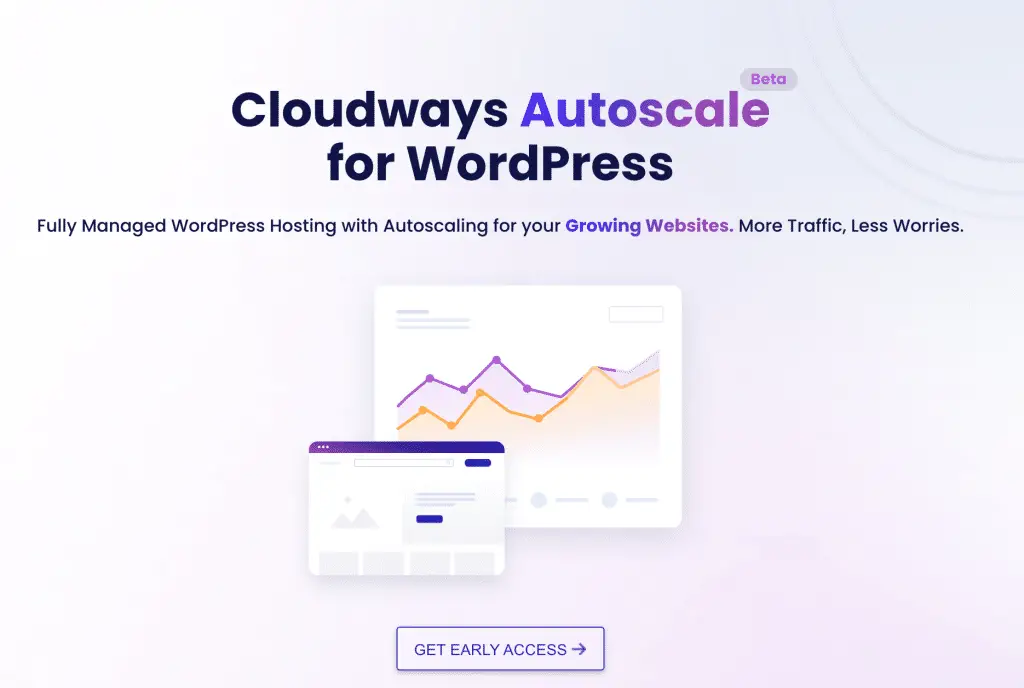
Here are four reasons why you should prioritize a reliable hosting provider:
- Faster loading times: A reliable hosting provider will have fast servers, resulting in quicker loading times for your website. This is crucial as visitors tend to leave if a site takes too long to load, leading to higher bounce rates.
- Improved uptime: With a reliable hosting provider, you can expect minimal downtime for your site. This means that users can access your website consistently, enhancing user experience and increasing organic traffic.
- Enhanced security: A trustworthy hosting provider offers robust security measures such as firewalls and malware scanning tools that protect your site from potential threats. This not only safeguards sensitive data but also boosts visitor trust.
- Scalability options: As your website grows, a reliable hosting provider allows you to easily scale up resources like storage and bandwidth without disruptions or significant downtime.
Investing in a reliable hosting provider lays the foundation for implementing effective SEO strategies and attracting organic traffic to improve the visibility of your WordPress site on Google search.
To further enhance the visibility of your WordPress site on Google search, it’s important to prioritize high-quality, original content…
Prioritize high-quality, original content
To improve the visibility of your WordPress site on Google search, focus on creating high-quality, original content that engages and captivates your audience.
Content creation is key to attracting organic search rankings and increasing website visibility. Start by conducting keyword research to understand what your target audience is searching for. This will help you optimize your content using effective SEO strategies.
You can use tools like SurferSEO to generate high-quality content by optimizing it according to the top 10 results in Google and use RANKMATH Seo Plugin to analyze your result.
RANKMATH helps to optimize your post according to the focus keyword of your content. to use it, first, you need to install the RANKMATH plugin and activate it and then open your Gutenberg editor and start writing your post and then click on the following icon on the right side as below;
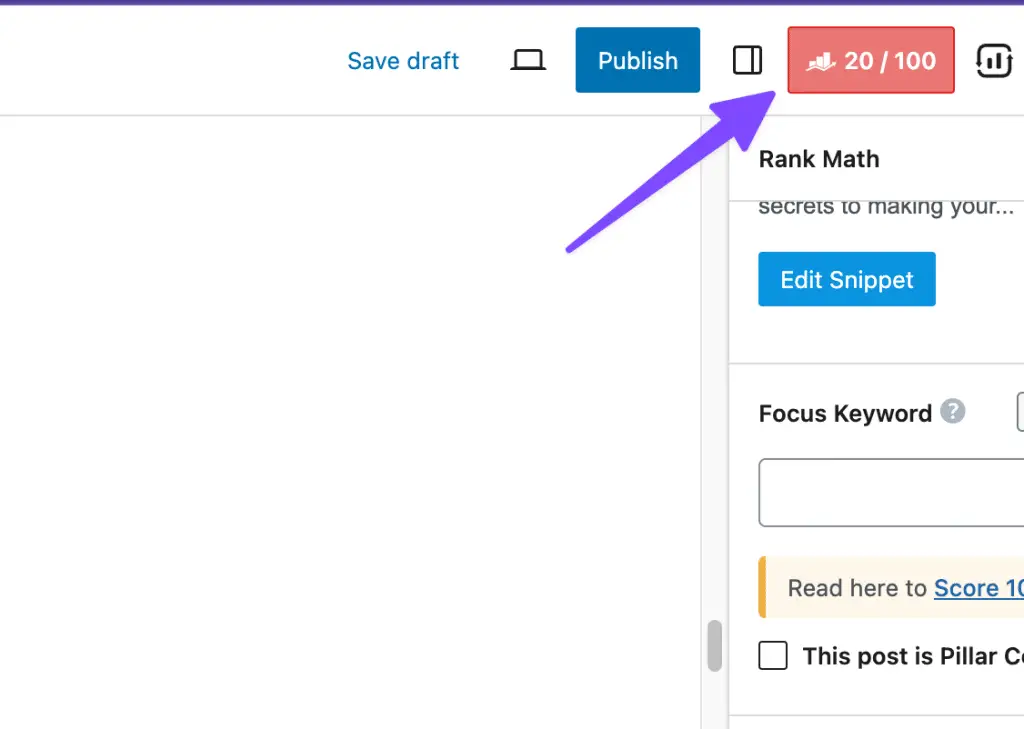
We have also covered a step-by-step tutorial in the following video;
And, afterward you need to enter the focus keyword as below;
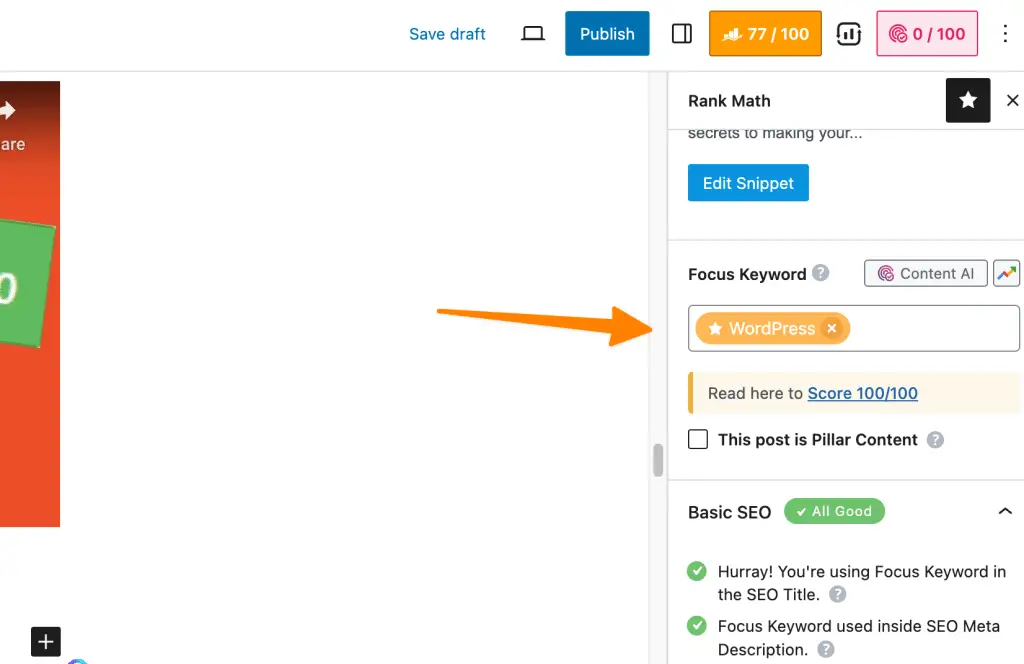
Now, you will be able to see 4 categories for which you need to optimize your content as follows;
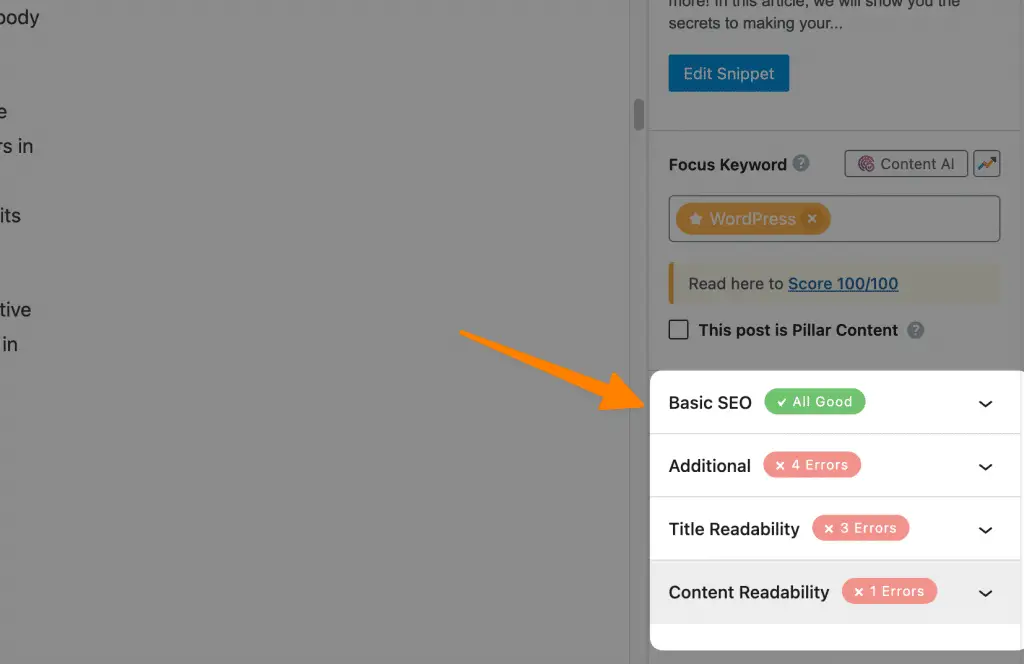
Now, click on each one of them and see where you need to work on your existing content as follows;
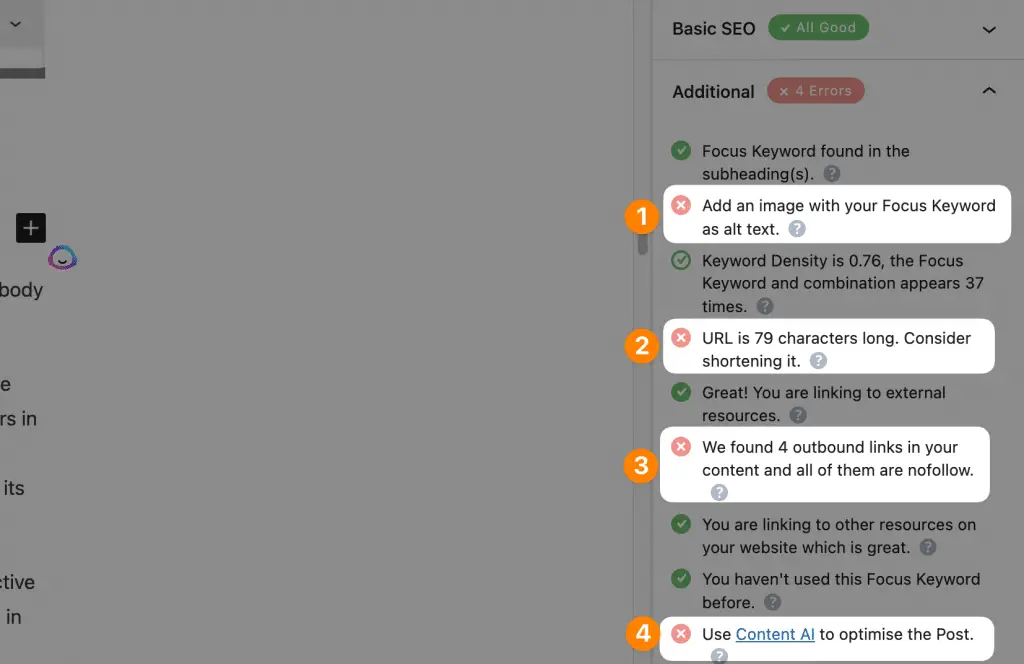
Start working on each of them to make your content visible to the search engines.
Incorporate these keywords naturally into your titles, headings, and throughout the body of your posts or pages.
In addition to creating valuable content, it’s important to promote it effectively. Share your articles on social media platforms, collaborate with other bloggers or influencers in your niche, and engage with your audience through comments and discussions. By actively promoting your content, you can drive more traffic to your site and improve its visibility in search engine results.
Now that you have learned about prioritizing high-quality content creation and effective promotion strategies, let’s move on to ensuring search engines are not discouraged in WordPress settings…
Ensure search engines are not discouraged in WordPress settings.
When setting up your WordPress site, it’s crucial to ensure search engines are not discouraged by adjusting the appropriate settings. To maximize visibility and attract more visitors, here are four key steps you should take:
First, you need to login to your WordPress dashboard and go to settings > reading;
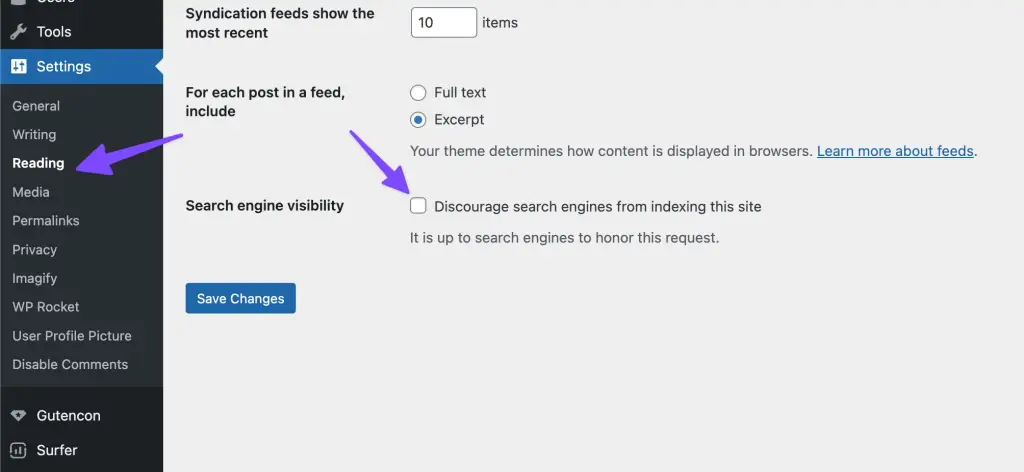
And then you should see if “Discourage search engines from indexing this site” is deselected.
By implementing these measures, you can improve your site’s visibility in search results while enhancing user satisfaction.
Now let’s move on to discussing the proper setup of robots.txt without further delay…
Proper setup of robots.txt
Now that you have ensured search engines are not discouraged in your WordPress settings, let’s move on to the importance of properly setting up your robots.txt file.
Robots.txt plays a crucial role in website visibility by instructing search engine crawlers on which pages they can or cannot access.
You can use the Robots.txt tester tool to test your website’s robots.txt file, first, you need to go to the tester tool here and select your property as below;
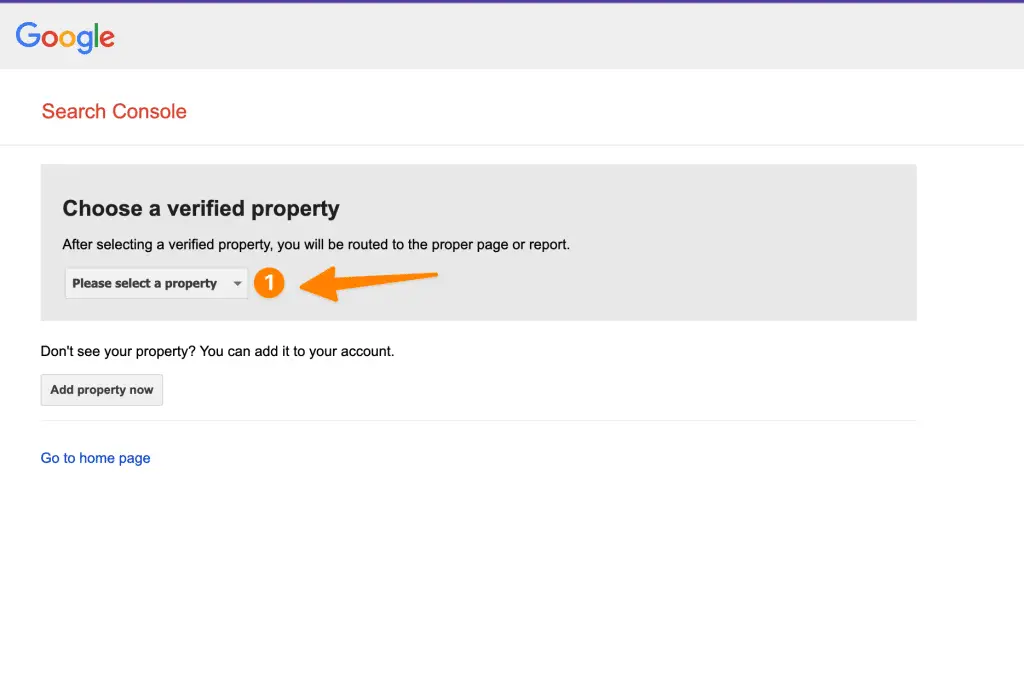
after you select your property, you will find the result below;
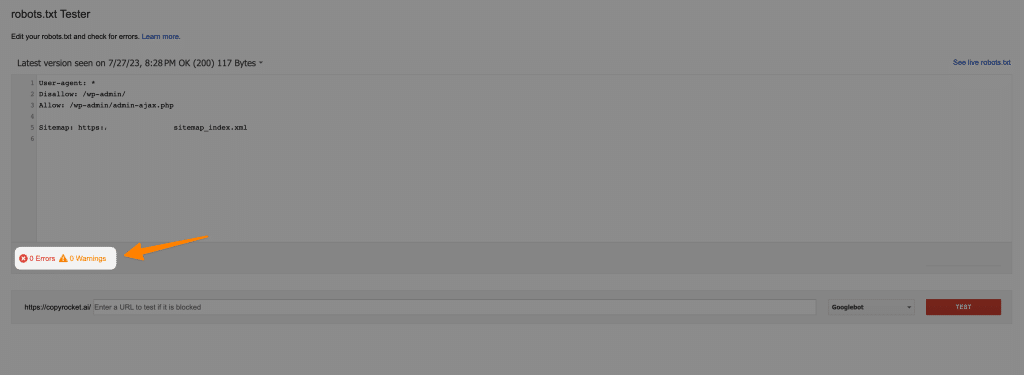
When setting up robots.txt, there are common mistakes you should avoid. For instance, some people may inadvertently block important pages from being crawled, leading to decreased visibility. To optimize your robots.txt file, it is best to follow some guidelines.
Make sure you use specific directives and keep it concise for better clarity.
Controlling search engine crawling using robots.txt allows you to prioritize what content appears in search results. By specifying which areas of your site should be indexed and excluded, you can effectively manage how search engines interact with your website.
If you encounter any issues with robots.txt, troubleshooting tips can come in handy. Understanding error messages and verifying the syntax of directives will help resolve any problems ensuring proper indexing of your site’s content.
Transition: Now that you have optimized your website’s visibility through robots.txt, let’s explore another essential aspect – promoting your site on social networks without relying solely on organic search traffic…
Promote your site on social networks
After properly setting up your robots.txt file to optimize website visibility, it’s important to promote your site on social networks for increased traffic. Social media strategies play a crucial role in driving more visitors to your WordPress site.
Additionally, you should add social sharing buttons on your WordPress site without a plugin, follow the below tutorial;
Here are four effective tactics to consider:
- Influencer collaborations: Partnering with influencers in your industry can help extend your reach and attract a wider audience.
- Content marketing tactics: Create compelling content that resonates with your target audience and encourages them to share it on their social networks.
- Engaging with online communities: Actively participate in relevant online communities, such as forums or Facebook groups, by sharing valuable insights and promoting your site when appropriate.
- Utilizing email marketing: Build an email list of interested users and regularly send them updates about new blog posts or promotions.
By implementing these social media strategies, you can drive more traffic to your WordPress site and increase its visibility online.
Now let’s delve into how to implement Google Analytics for better tracking and analysis of your website performance.
Implement Google Analytics 4
To effectively track and analyze your website performance, you should implement Google Analytics. By implementing Google Analytics, you gain access to valuable insights about your website’s visitors and their behavior.
You can follow the simple process using the video below;
Checkout 8 Seo Metrics You Can Analyze From Google Analytics to rank better
This powerful tool allows you to track data such as the number of visitors, page views, bounce rate, and conversion rates.
With this information at your fingertips, you can make informed decisions on how to improve your website’s user experience and optimize your marketing campaigns for better results.
Analyzing website traffic through Google Analytics helps you identify which pages are performing well and which ones need improvement. Armed with this knowledge, you can make data-driven changes to enhance your website’s performance and drive more conversions.
Now that you understand the importance of tracking data through Google Analytics, let’s move on to creating and submitting a sitemap to further boost your site’s visibility on search engines.
Create and submit a sitemap
Creating and submitting a sitemap is essential for improving your website’s visibility on search engines. A sitemap is a file that lists all the pages on your website, helping search engine crawlers understand and index your site more efficiently.
Checkout How to Add Your WordPress Sitemap to Search Engines: A Step-by-Step Guide
Here’s how you can optimize your website structure and increase search engine ranking through sitemap creation and submission:
- Generate a sitemap using a plugin or an online generator.
- Submit your sitemap to search engines like Google, Bing, and Yahoo.
- Regularly update your sitemap whenever you add or remove pages from your website.
- Monitor the indexing status of your website through Google Search Console.
By following these steps, you are maximizing the chances of search engines discovering and indexing all of your web pages effectively.
Once you have created and submitted your sitemap, it’s time to set your preferred domain in Google Webmaster Tools for further optimization without any additional steps needed.
Set your preferred domain in Google Search Console
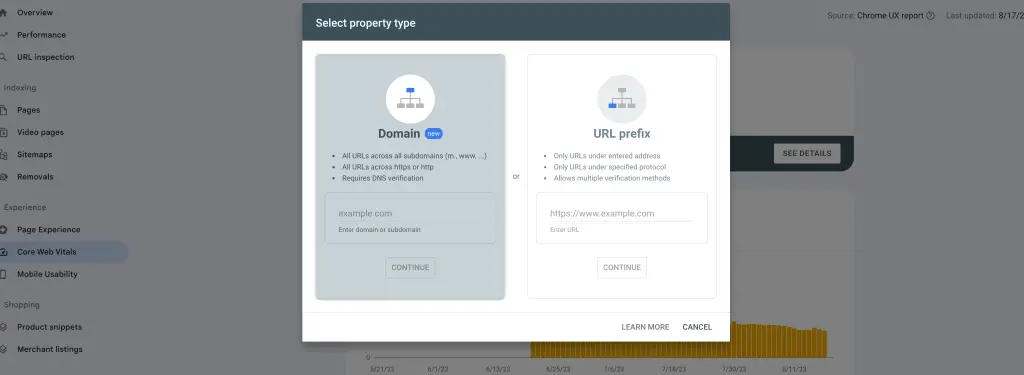
You can easily set your preferred domain in Google Search Console by following these steps.
Understanding SEO techniques is crucial for optimizing your website’s visibility on search engines like Google. One aspect of SEO that often gets overlooked is the importance of mobile optimization. With more and more people using their smartphones to browse the internet, having a mobile-friendly website is essential.
Another key factor in improving your website’s visibility is using relevant keywords throughout your content. This helps search engines understand what your site is about and rank it accordingly.
Additionally, utilizing social media platforms can increase your website’s visibility and drive more traffic to it. By sharing valuable content and engaging with your audience, you can attract new visitors and potentially improve your rankings on search engine results pages.
To further enhance the visibility of your WordPress site on Google search, it’s important to set your preferred domain in Google Webmaster Tools. This ensures that Google understands which version (www or non-www) of your site you prefer to be displayed in search results.
Manually request Google to crawl your site if necessary.
Now that you have set your preferred domain in Google Search Console, it’s time to take further steps to make your WordPress site more visible on Google search.
First, you need to paste your URL to the following inspect bar and press ENTER in Google Search Console;
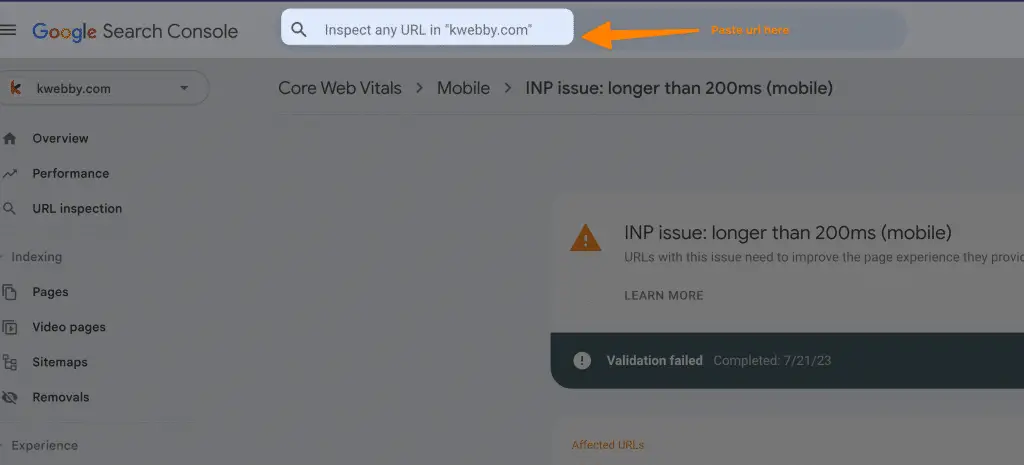
And, when you press ENTER, A report will open as below;
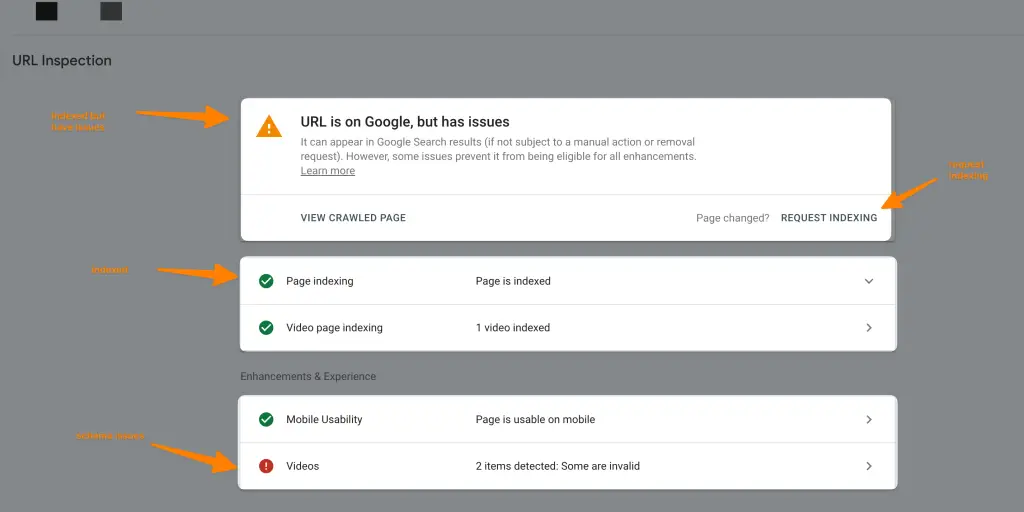
Here you will be able to see if it’s indexed or not or have some issues with it, therefore, as you can see URL is indexed on Google but there are some issues with the videos SCHEMA, therefore, to rectify the same click on it and see what’s wrong with it.
You can click on “Request Indexing” if your URL is not on Google.
Regularly updating your website’s content is crucial for attracting search engine crawlers and keeping your site fresh and relevant.
Utilizing XML sitemaps allows you to provide a clear structure of your website’s pages, helping search engines understand the organization of your content.
Optimizing your website speed is also essential as faster loading times improve user experience and increase the likelihood of higher search rankings.
Additionally, leveraging an effective internal linking structure helps search engines navigate through your site easily, improving its visibility.
Lastly, implementing structured data markup provides additional context about the content on your website, making it easier for search engines to understand and display relevant information in search results.
By incorporating these strategies into your WordPress site, you can enhance its visibility on Google search results.
To ensure the .htaccess or nginx .conf file is set up correctly…
Ensure the .htaccess or Nginx .conf file is set up correctly.
To properly set up the .htaccess or Nginx .conf file, ensure that it is configured correctly. This is crucial for optimizing your server settings and improving SEO performance.
Also read NGINX vs Apache Web Server: Which is best for WordPress in 2023?
Here are four important points to keep in mind:
- Understand .htaccess configuration: Familiarize yourself with the various directives and rules that can be added to your .htaccess file to control website access, redirects, caching, and more.
- Master nginx.conf setup: Similarly, learn how to configure your Nginx server using the nginx.conf file. This will involve setting up server blocks, handling static files efficiently, and enabling necessary modules.
- Troubleshoot common indexing issues: Keep an eye out for any misconfigurations or conflicts that may prevent search engines from properly indexing your website. Test different configurations and monitor the effect on crawling and indexing.
- Continuously optimize server settings: Regularly review and fine-tune your server settings to ensure optimal performance and responsiveness for both users and search engine bots.
Tools you may need;
Now that you have a solid understanding of configuring your server files, let’s move on to checking meta tags for correct indexing directives…\
Check meta tags for correct indexing directives.
Once you’ve configured your server files correctly, it’s important to check your meta tags for the right indexing directives. Checking your meta tags ensures that search engines understand what your website is about and can properly index it.
Check out What Are Meta Tags? Is it Important for SEO? Let’s Find Out!
By optimizing these tags, you improve the visibility of your website in search results, increasing its chances of ranking higher.
You can also check Google’s Guidelines on Meta here.
Start by examining the meta title and description tags on each page of your WordPress site. Make sure they accurately describe the content and include relevant keywords.
Additionally, consider adding meta robot tags to control search engine indexing and determine whether a page should be followed or not followed.
Also check out Ultimate Guide to Generate Social Media Meta Tags for Your Website
Properly checking and optimizing these meta tags will help boost your search rankings and drive more organic traffic to your site.
Tools You may need;
To further enhance your website’s visibility and authority, focus on acquiring quality backlinks from reputable sources…
Focus on acquiring quality backlinks
If you want to improve your website’s visibility and authority, you should focus on acquiring quality backlinks from reputable sources.
How to Check Backlinks in 2023 – A Comprehensive Guide
Here are some link-building strategies to help boost your website’s presence on Google search:
- Importance of anchor text: When acquiring backlinks, make sure the anchor text (the clickable text) contains relevant keywords related to your site. This helps Google understand what your page is about.
- Guest blogging opportunities: Seek out guest blogging opportunities on authoritative sites in your niche. By writing high-quality content for these sites and including backlinks to your own site, you can not only gain valuable exposure but also build strong backlinks.
- Building relationships with other website owners: Reach out to other website owners or bloggers in your industry and offer to collaborate or exchange links. Building relationships can lead to mutually beneficial partnerships and more quality backlinks.
- Utilizing social bookmarking sites: Submitting your content to social bookmarking sites like Reddit or StumbleUpon can generate traffic and attract potential backlink opportunities.
By implementing these strategies, you can start building a strong network of quality backlinks that will enhance the visibility of your WordPress site on Google search results.
But remember, it takes time for Google to index these changes, so be patient as you wait for them to take effect in boosting your site’s rankings.
Patience: Allow time for Google to index.
Be patient and give Google time to index the changes you’ve made to your website. Understanding the indexing process is crucial in making your WordPress site visible on Google search.
Indexing refers to the process of adding web pages into Google’s search index, while ranking determines where your site appears in search results. To optimize your site for indexing, focus on improving its structure by organizing content logically and using clear navigation menus. Additionally, optimizing meta tags such as title tags and meta descriptions helps Google understand what each page is about. Site speed is also an important factor, so make sure your site loads quickly.
Remember that it takes time for Google to recognize and reflect these improvements in its search results.
Now that you understand the importance of indexing, let’s address some frequently asked questions regarding optimizing your WordPress site for better visibility on Google search…
More WordPress SEO Resources
- How To Add Internal Links In WordPress Automatically in 1 Click
- How to Noindex Low-Value Content in WordPress in 2 Simple Steps
- How to Optimize Images for SEO In WordPress in 2023 (Only Guide You Need!)
- How To Mark Up Your Posts/Pages With Schema In WordPress To Skyrocket SEO (2 Easy Way)
- How To Enable Seo-Friendly Permalinks In WordPress in 2023
- How To Show ‘Last Updated’ Dates In WordPress (3 Easy Methods)
- 8 Best WordPress Cache Plugins to skyrocket your website’s speed
FAQs
Are you wondering how Google discovers new websites? Understanding this process is crucial to getting your site noticed.
Additionally, knowing the difference between crawling and indexing will help you optimize your site for search engines.
If you’re unsure whether your site is indexed by Google, there are easy ways to check.
Lastly, quality backlinks play a significant role in improving your website’s visibility and ranking.
Let’s dive into these key points and learn how to make the most of them for your website’s success.
How does Google discover new websites?
Google discovers new websites through links from already indexed pages and sitemaps, which helps increase their visibility on the search engine. To optimize your website’s visibility on Google search, consider the following:
- Importance of website speed: A fast-loading website improves user experience and can positively impact your search rankings.
- Benefits of using SSL certificates: Secure Socket Layer (SSL) certificates encrypt data transmitted between a user’s browser and your website, providing security and trustworthiness.
- The impact of mobile optimization on search visibility: With more users accessing the internet via mobile devices, having a responsive design that adapts to different screen sizes is crucial for search rankings.
- Best practices for optimizing images on your website: Compressing images without compromising quality reduces load times and enhances user experience.
- The role of XML sitemaps in improving search engine visibility: XML sitemaps help search engines understand the structure of your site, making it easier for them to crawl and index its content.
Understanding how Google discovers new websites is just one step towards optimizing your online presence. But what is the difference between crawling and indexing?
What is the difference between crawling and indexing?
Now that you understand how Google discovers new websites, let’s dive into the difference between crawling and indexing.
Crawling is when search engines like Google explore your website to gather information about its content, structure, and links.
On the other hand, indexing is the process of adding your website’s valuable content to the Google index.
It’s crucial to ensure that your website is visible on search engines like Google because it directly impacts your search engine rankings.
The benefits of efficient crawling and indexing include increased visibility, improved organic traffic, and higher chances of appearing in search results.
To enhance crawling efficiency, you can use techniques such as creating a sitemap, optimizing robots.txt file, and using internal linking effectively.
However, there are common mistakes to avoid in crawling and indexing such as blocking important pages with robots.txt or using excessive noindex tags.
How can I check if my site is indexed by Google?
To see if your site is indexed by Google, you can use the site:yourdomain.com query in the search bar. This simple technique allows you to check if your website has been crawled and added to Google’s index.
Here are some key points to consider:
- Importance of website speed: Google prioritizes fast-loading websites for better user experience and higher ranking.
- Mobile friendly website design: With the increasing number of mobile users, having a responsive design is crucial for indexing and ranking on Google.
- Role of XML sitemaps in indexing: A well-structured XML sitemap helps search engines understand your site’s structure and content, improving indexing efficiency.
- Utilizing Google Search Console for site indexing: This powerful tool provides valuable insights into how Google views and indexes your site.
- Impact of duplicate content on indexing: Duplicate content can confuse search engines and hinder proper indexing.
Now that you know if your site is indexed by Google, let’s explore why quality backlinks are essential for your website’s success.
Why is it important to have quality backlinks?
, having quality backlinks is crucial for improving your website’s visibility and credibility in search engine rankings. Backlinks are links from other websites that point to your site, signaling to search engines that your content is valuable and trustworthy. The importance of backlinks cannot be overstated when it comes to SEO. They have a significant impact on how search engines perceive the relevance and authority of your site.
There are different types of backlinks, including natural links, manual outreach links, and self-created links. To build high-quality backlinks, you can focus on creating valuable content, reaching out to influencers or industry experts for collaborations or guest posting opportunities, and promoting your content through social media channels.
Conclusion
In conclusion, website owners should prioritize being indexed by Google to increase organic traffic and should continuously adapt their SEO strategies to stay visible in the ever-evolving online landscape. Here are some key takeaways:
- Importance of regular website maintenance: Regularly update your website’s content, fix broken links, and ensure its functionality for better user experience and search engine optimization.
- Strategies for improving website loading speed: Optimize your site’s performance by minimizing HTTP requests, compressing images, enabling browser caching, and using a content delivery network (CDN) to deliver your site’s assets quickly.
- Best practices for optimizing website images: Compress images without sacrificing quality, use descriptive alt tags, and choose the right file format to improve page load times while still providing visually appealing content.
- Techniques for improving website user experience: Create a clean and intuitive navigation structure, optimize your site’s mobile responsiveness, ensure fast-loading pages across all devices, and provide valuable and engaging content to keep visitors on your site longer.
- Tips for writing compelling meta descriptions: Craft concise but informative meta descriptions that entice users to click through to your site from search engine results pages (SERPs). Include relevant keywords naturally while accurately summarizing the page’s content.
By implementing these strategies and continually adapting your SEO approach based on industry trends and algorithm updates, you can boost visibility on Google search results pages and drive more organic traffic to your WordPress site.
Stay proactive in maintaining an optimized online presence!

